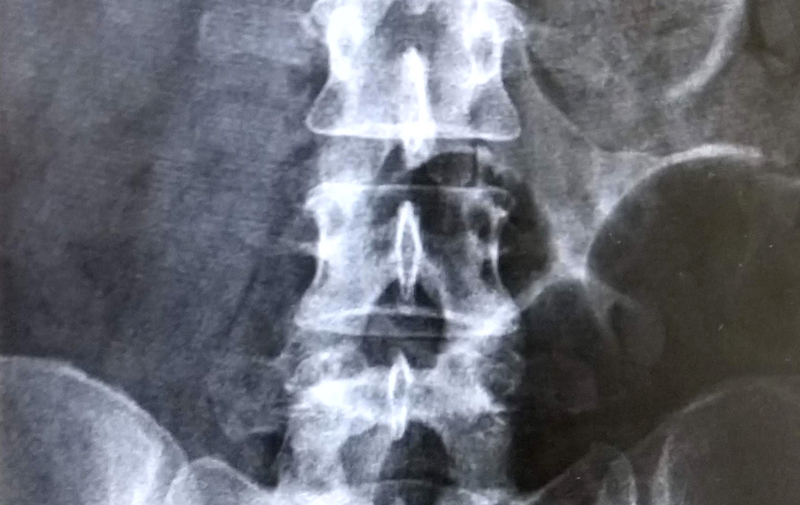- Dr David Colvin
What is an injury?
workers comp injury
 David: What is the definition of a workers compensation injury?
David: What is the definition of a workers compensation injury?
Peter: This is what the official definition (Section 5) tells us:
Injury means —
- a personal injury by accident arising out of or in the course of the employment, or whilst the worker is acting under the employer’s instructions; or
- a disease because of which an injury occurs under section 32 or 33; or
- a disease contracted by a worker in the course of his employment at or away from his place of employment and to which the employment was a contributing factor and contributed to a significant degree; or
- the recurrence, aggravation, or acceleration of any pre‑existing disease where the employment was a contributing factor to that recurrence, aggravation, or acceleration and contributed to a significant degree; or
- a loss of function that occurs in the circumstances mentioned in section 49.
The two most commonly seen types of injury that give rise to a worker’s compensation claim are injuries that fall under definitions (a) and (d).
David: When is negligence relevant in a workers compensation injury?
Peter: Workers Compensation is a no-fault system. All that has to be demonstrated for the purpose of a subsection (a) injury claim is that a worker suffered a personal injury, by accident, in the course of the employment, or whilst acting under the employer’s instruction. Negligence of the employer, co-workers or the worker themselves is irrelevant. Negligence only becomes an issue if common law proceedings are involved.
A simple example – an electrician falls off a ladder at work and breaks his arm.
“Personal injury “– broken arm.
“By accident “– slipped and fell off the ladder.
“In the course of the employment or whilst acting under the employer’s instructions“ – employer confirms to insurer that he sent the worker to the particular premises to install lights.
David: How does the Act deal with pre-existing conditions?
Peter: The subsection (d) definition contemplates where a worker has a pre-existing medical condition, whether symptomatic or asymptomatic, that ultimately leads to a worker as being certified as suffering an incapacity for their usual work.
When considering whether the employment contributed to a significant degree to the recurrence, aggravation or acceleration of a pre-existing disease, the Act requires the medical practitioner to consider the following criteria as outlined in subsection (5) which says;
(5) In determining whether the employment contributed, or contributed to a significant degree, to the contraction, recurrence, aggravation or acceleration of a disease for purposes of the definitions of injury and relevant employment, the following shall be taken into account —
- the duration of the employment; and
- the nature of, and particular tasks involved in, the employment; and
- the likelihood of the contraction, recurrence, aggravation or acceleration of the disease occurring despite the employment; and
- the existence of any hereditary factors in relation to the contraction, recurrence, aggravation or acceleration of the disease; and
- matters affecting the worker’s health generally; and
- activities of the worker not related to the employment.
 David: How should the doctor’s report address these issues?
David: How should the doctor’s report address these issues?
Peter: Requests are often sent to treating medical practitioners, either GP’s or specialists, to assist in determining liability and causation issues. Those parties will be seeking information from the doctor as to the description of the work incident and injury as provided by the worker, and whether the description of the incident and injury is consistent with the workers presentation.
The report will request a diagnosis and prognosis. It will usually seek the doctor’s opinion on whether the injury as described has caused an incapacity for pre-injury work, and whether it is a total incapacity, partial incapacity or whether the worker retains a full work capacity. For an example of subsection (d), take the case of a worker presenting with back pain where radiological investigations show pre-existing degeneration of the lumbar spine.
What is usually then sought is medical opinion as to whether the employment contributed to a significant degree to the recurrence, aggravation or acceleration of the pre-existing medical condition, bearing in mind the stated criteria for consideration in subsection (5).
There can be multiple contributors to a worker’s back injury and incapacity and these all need to be taken into consideration by the doctor. The injured worker may well have injured their back during the course of their employment. However, they might be very sports oriented and do dirt bike racing and water skiing. They may enjoy home renovation or gardening or a variety of non-work-related activities that could lead to back problems.
Radiological investigations may show pre-existing degenerative change of the spine. Of course, the radiological investigation won’t show what caused the degeneration. If it is the medical practitioner’s opinion that the physical nature of the work, for example as a bricklayer, has been a significant contributing factor to the recurrence, aggravation or acceleration of the back injury, then the medical practitioner may form the opinion that this does constitute a work injury under the terms of the Act. In doing so, the doctor will need to pay regard to the criteria of subsection (5).
PETER PARKER
Work Injury Consultancy
Independent Registered Agents with WorkCover WA assist injured workers in relation to worker’s compensation claims for statutory entitlements and represent workers at the Conciliation Service and the Arbitration Service.
David: Thank you Peter. An important follow on point regarding pre-existing degeneration is that when the claim is finalised, some deduction from the assessed permanent impairment may apply. However, no deduction is allowable for pre-existing disease “that was to any extent asymptomatic before the event”.
